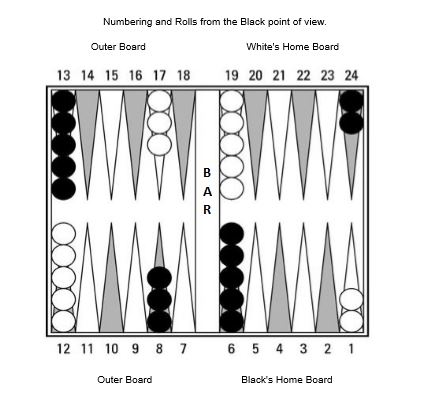Last updated on November 1, 2023
You have your Deluxe Backgammon set and you understand the opening moves. To take your game to the next level so you can truly enjoy using your backgammon set, you need to understand the replies to the opening moves. In this guide, we will explain how to respond to the opening moves and discuss some of the alternatives. A complete list of Playing Guides is available on this link.
Dice rolls
As discussed in our Backgammon Opening Moves playing guide, there are 15 possible dice combinations for the opening move. There are about 30 acceptable ways to make each of those plays. When it comes to the reply, we now include doubles, so there are 21 possible dice combinations in play. This means, in reply, there are a total of (30 x 21) 630 different options you might encounter if your opponent had made the opening roll.
These options have all been studied and analysed using computer-generated rollouts. You can find lists of the moves online. This article will not cover all of these possibilities, rather it will focus on the general principles for the reply. This post uses standard backgammon notation.
Obviously, most of the opening moves remain as an option for the reply, but these need to be considered in response to your opponent’s move. You may miss an opportunity if you stubbornly follow the opening moves. In addition, there are an additional six moves as the doubles are now included.
A double reply
The options here will depend on your opponent’s first move, but the best option for each double is explained below.
6-6: Try to secure both bar points 24/18(2), 13/7(2) to create barriers and to hold these important positions on the board. Alternatively, if your opponent had split their back pair on the opening move, there may be an opportunity to hit a blot and secure your 2-point.
5-5: If your opponent opened by splitting the back pair, you should hit the blot on the 1-point with the double 5. Additionally, you can secure the 3rd point in your home board. 6/1*(2), 8/3(2). If the opponent didn’t split, 13/8(2), 8/3(2) is the best option.
4-4: The first option should be to hit any available blots. Otherwise, you should secure the 20-point and the 9-point 24/20(2), 13/9(2).
3-3: If your opponent has left blots on the 5 or the 3-points, these should be the primary targets. Hit the blots and bring through the second checker to secure the point 8/5(2), 6/3(2). Otherwise secure the 21 and 10-points (24/21(2), 13/10(2).
2-2: If you can, hit your opponent in the 20-point and secure the 4-point 24/20(2), 6/4(2). Alternatively, secure 4, 11 or 22-points.
1-1: The best reply for this Backgammon opening move is securing the 5-point and the bar-point.
General principles
In backgammon, there are general principles that should be applied to replies to the opening moves. For instance, hitting your opponent’s blot on the far side of the board. This will send your opponent back to the bar, immediately pushing them back in the race and forcing them to re-enter. This should be the number one priority for an aggressive player and they should favour this approach over securing a point in your home board. Additional, principles include:
Hit your opponent’s blot on your 5 or 4-point and secure the point on a subsequent move.
If a hit isn’t possible refer to the Backgammon Opening Moves Guide:
If you can’t hit a blot, secure a point preferably in your home board.
Move a builder down from your home point, being careful not to leave blots within range of a direct hit (6 or less).
Related content
Backgammon rules are available on this link.
Backgammon opening moves, a simple list.
The 5 best opening rolls in backgammon.


Like!! Great article post.Really thank you! Really Cool.